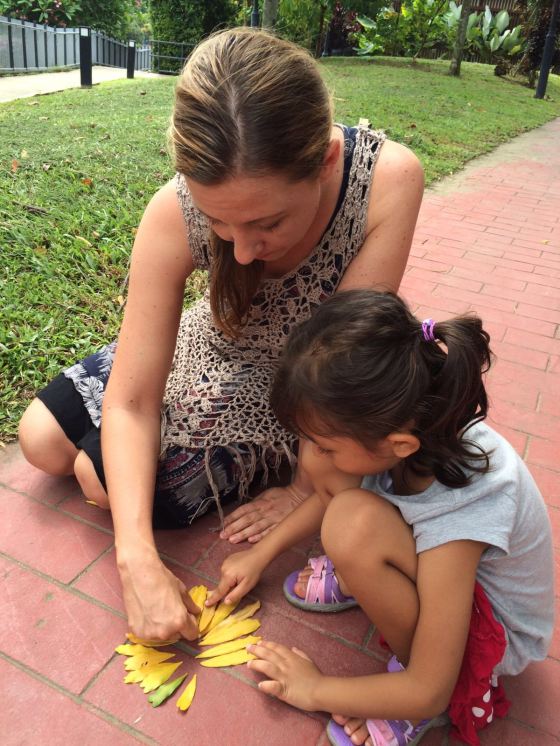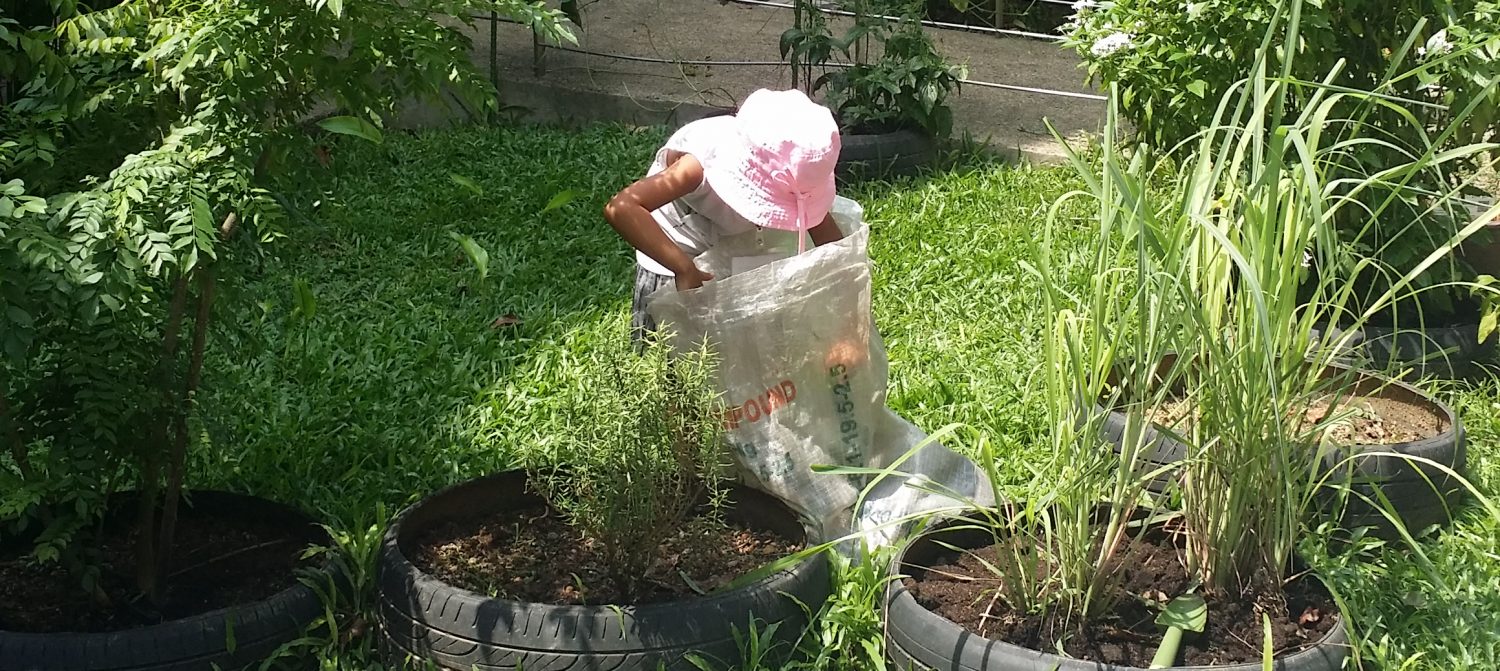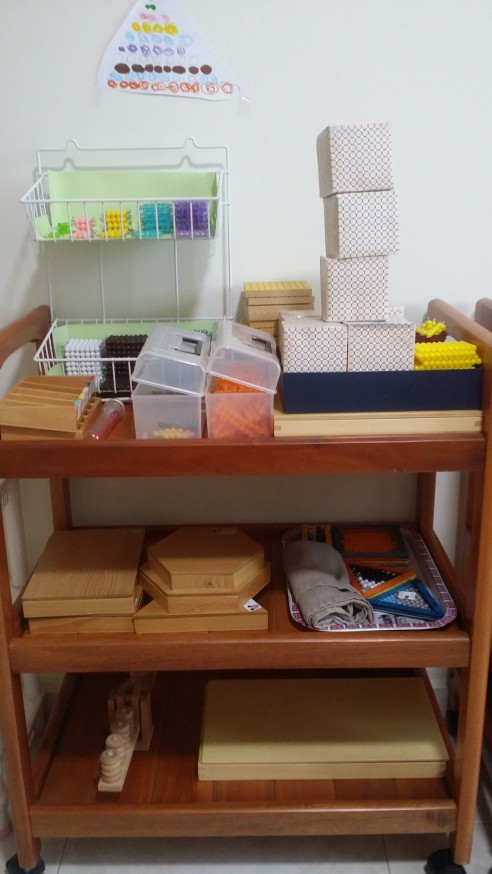World Wildlife Day is fast approaching on March 3rd, and the theme this year, Listen to the Young Voices brings me a great blog topic – children and nature study.
My daughter is five and a half. We watched the 1992 film Fern Gully: The Last Rainforest on the weekend and, as I expected, it sparked more excitement to pretend we were fairies rather than how to save wilderness. While we were flying around the living room afterwards she did surprise me in saying that “if the big machine comes to take the trees we can show the driver a picture of what the place will look like with and without the trees. Then he can choose.” Ah, there’s the spark.
More realistically, though, we can’t expect a child of five to understand the complexities of ecosystems or how we, as humans, interact with wilderness to preserve it. They are still preoccupied with gaining a sense of how the world looks, how it feels, smells, tastes and sounds. Montessori sensorial activities were designed for this age to provide safe exploration of his senses independently of the adult.
We can not create observers by saying, “observe,” but by giving them the power and the means for this observation, and these means are procured through education of the senses. – Montessori 1912, p.229
I’ve seen this first hand in our set up home environment, where I observed DD focus on the textures she feels, or where she would listen to a whole song and ask for it many times again, kneading dough, commenting on the smells around etc. Naturally the sensory cravings are equally present on our trips outdoors – to the park, beach, a gardening session here and there.
We usually go with friends close in age and I observe that they do mostly enjoy collecting and sorting items, using their treasures as toys. They like to feel the sand and dirt, crunch dry bark, have stick fights and climb on rocks. They also still stay close to the parents and are sometimes afraid of what they encounter. When I pulled DD up from a small ditch last week she called ‘Mum, you nearly let me die!’ A little dramatic, but for them it’s all so real.
The same day we were taking our friend’s boy home when I noticed a tiny caterpillar on his neck. This boy has been very scared of insects, so I calmly asked him to hold still while I got the harmless creature to walk onto my finger. After watching it inch his way up and down my arm a while the boy bravely asked to hold it. He squealed with delight at the ticklish feeling and the fact that he was holding a living thing! And he even went so far as to exclaim that he wanted to be the new carer of his green friend and decidedly he took it home. So, this is an insight into what nature does for the five year old.

DD and I sort coloured leaves to make a spiral.
I’m excited to find, though, that from age seven onwards, the child’s view widens. Maria Montessori wrote extensively on the importance of nature studies and venturing outdoors for age seven plus, and for many reasons. She believed that at around this age the child has the physical need to get out of the house, and for their legs to take flight. Mentally, it is also a time of great imagination and wonder. Where there was once a need to focus inward to develop the senses, the child’s mind is somewhat more free to seek a rich world where he is interested mainly in the ‘how and why’:
All that used to attract him sensorially now interests him from a different point of view. He is looking for what needs to be done. That is, he is beginning to become aware of the problem of cause and effect. – Montessori, 2007 p.10
So, it seems, Fern Gully will have a different effect on DD in a couple of years. She’ll want answers and she’ll be more mobile than ever. Thanksfully, Montessori provides many suggestions about how getting out in nature can satisfy the elementary child’s curiosities, physical needs and social development. It looks like the wilderness will be our classroom much of the time. But, with new territory comes preparation:
Since life outdoors differs from life in a closed environment, a guide and an aim are necessary. In short, to go out, one must be ready for it. Montessori, p12
I was surprised to read that they even had scouts in the 1920s. Montessori recommended children joining a club such as scouts to gain practical life lessons on preparation and survival. Also, as a way to learn from more experienced children and adults some valuable moral lessons and social skills.
As an adolescent, Montessori believed nature immersion was even more important:
Life in the open air, in the sunshine, and a diet high in nutritional content coming from the produce of neighboring fields improve the physical health, while the calm surroundings, the silence, the wonders of nature satisfy the need of the adolescent mind for reflection and meditation (Montessori, p.112).
So it appears that although much is written about Montessori’s classroom materials she gave equal acclaim to nature’s whispers to children of all ages. If the child could clearly express his developmental needs he would say ‘take me outside!’ ‘Give me time to listen, watch, touch and play.’ The young voices indeed need to be listened to. Nature whispers to them, ‘grow’.
If a relationship with wilderness is so important to bring up a healthy, peaceful, social and fully functional adult then we must be proactive in providing opportunities for the young ones to experience it. The next couple of blog posts will be dedicated to showing you how you can give this to your child, whether they are in the under 6 sensorial period or 7 and above.
Until then, stay green,


